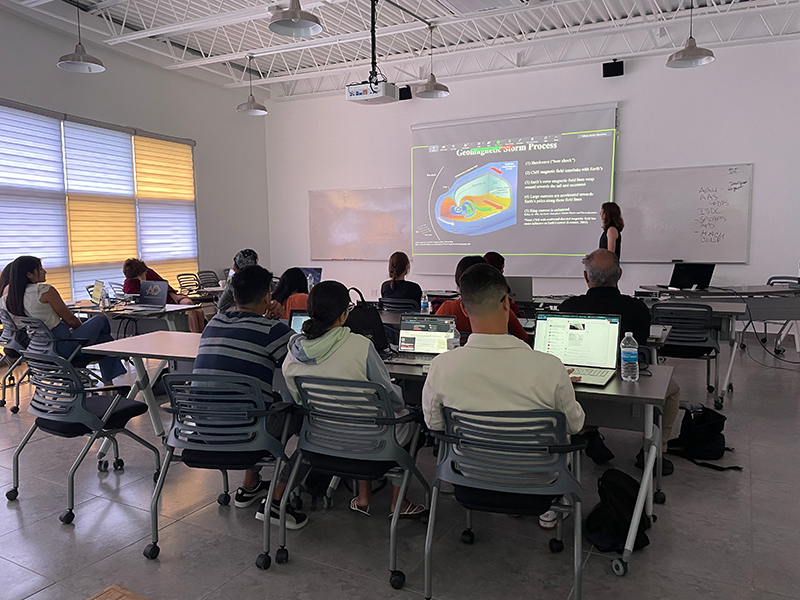The Everlasting Legacy of the Arecibo Observatory:
The Educational and Public Outreach Component (EPO)
Written by Dr. Carlos Padín, Chancellor of the Universidad Metropolitana (UMET) and Director of the AO Science & Visitor Center
The Arecibo Observatory's role in students’ and teachers' professional development, which we are very proud of, has been one of the most critical aspects of the EPO component. Since its establishment, the Arecibo Observatory has been a research facility for thousands of local and international students and teachers. They receive training in the science studied in the Observatory and many other STEM areas.
STEM education was possible through programs including the Research Experience for Undergraduate Students (REU), Research Experience for Teachers (RET), and STAR Academy. These programs benefit high school students, and graduates, post-doctoral research experience, workshops, and seminars offered every year. The Arecibo Observatory has proven its compromise to train the next generation of scientists in space-related sciences. Students used Arecibo's data for hundreds of theses, doctoral dissertations, and research papers.
The numbers are impressive: over 375 dissertations (215 Astronomy, 30 Planetary, and 132 Atmospheric Science) and over 2,000 peer-review publications (875 Astronomy, 233 Planetary, and 989 atmospheric science). The impact on Puerto Rico STEM education engagement is also impressive. In the last 10 years, more than 1,100 students have participated in the Star Academy or similar projects with a retention of more than 90% in STEM careers. The REU program has been very successful in its number of applications and in the experiences at the site. The Arecibo Observatory was one of the first astronomy REU sites, and has been hosting the program since 1987, though AO has operated undergraduate internship programs since 1972. In the last ten years, more than 70 students from all over the USA had benefited from the research resources of the AO. The EPO component has also provided a series of training and seminars to in-service teachers. More than 900 teachers have benefited from the multiple educational activities provided by the EPO team. The Observation nights at AO were a very successful family-oriented activity that attracted more than 400 visitors per activity. The Angel Ramos Science and Visitor Center has received more than 600,000 visitors in the last ten years, with two years that were mainly closed due to the COVID situation.
Social media has also become part of the educational and outreach project. Every month there was an increment of hits on Facebook (27,000/mo.), Twitter (6,000/mo.), and Instagram (4,000/mo.). Arecibo also promoted other outreach activities like the AO Colloquium Series, #Today AO, Micro comics, Why I love Working @AO; AO Newsletter, and Comics books: Data Dreams; among others.
Arecibo Observatory was a unique facility that promoted high-quality research and STEM education. Arecibo was an inspirational site that promoted creativity, critical and logical thinking in all its visitors of all ages. The Arecibo Observatory’s commitment to education and outreach was integral to inspiring the next generation of scientists, promoting scientific literacy, and fostering a sense of wonder and curiosity about the universe. Puerto Rico has lost a unique research, unreplaceable, facility that inspires many scientists. Notwithstanding, we hope that AO’s legacy in education and outreach continues to inspire and impact individuals worldwide.


